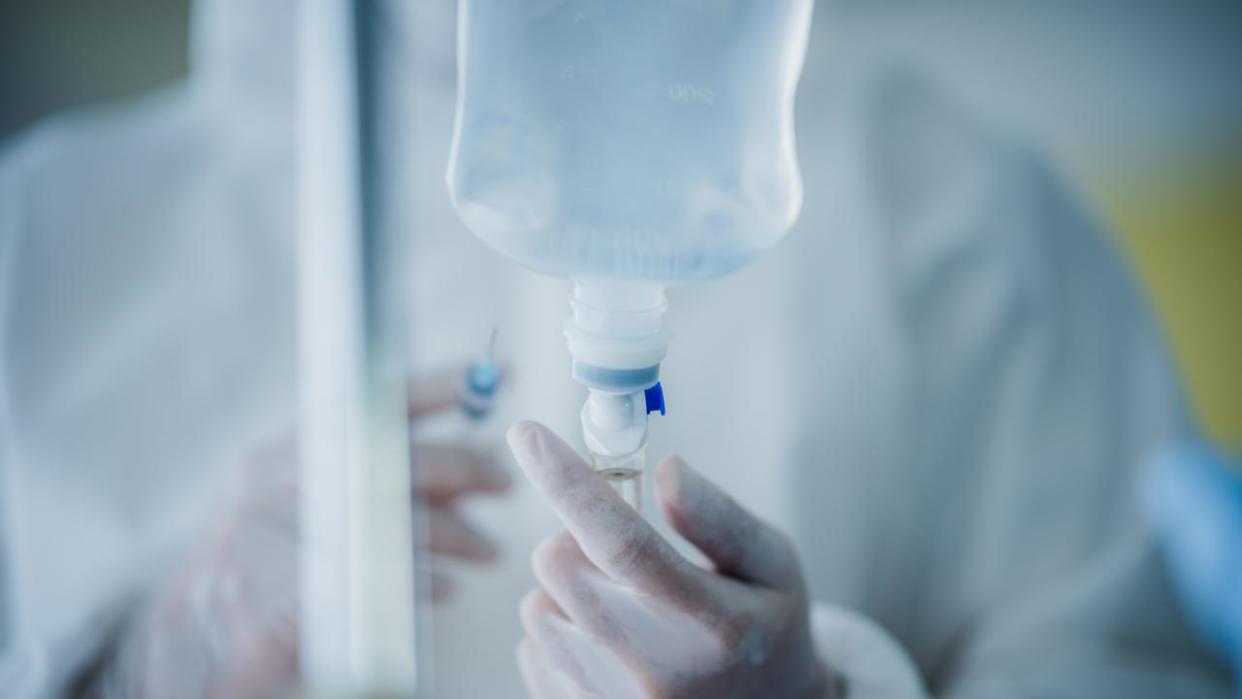Man dead as state warned of outbreak

Authorities are investigating whether there are further contaminated saline products in Australian hospitals after a man’s death at a busy hospital and 44 other infections in one state.
Queensland Health issued an urgent quarantine notice for two separate InterPharma sodium chloride products after the man died at Buderim Hospital on the Sunshine Coast.
The saline products are said to be contaminated with Ralstonia pickettii, a bacteria that can lead to septic shock and death in immunosuppressed people.

Queensland chief health officer John Gerrard said the organism found in the saline product was most commonly found in water.
“It grows naturally in water in lakes and streams and rivers, but it shouldn’t obviously be in sterile samples,” Dr Gerrard said.
“We see it occasionally, it’s common out there, it’s in water samples, but you don’t normally see it in human samples.
“For the most part, it is harmless, but if it’s injected into the bloodstream, it’s harmful.
“It cannot spread from one person or another.”
Dr Gerrard said all contaminated saline products had been removed and replaced with other products from a different supplier.
“This particular supplier was not used extensively in Queensland public hospitals,” he said.
“There were seven public hospitals that use this product, it was removed.”

Dr Gerrard said lab results discovered the organism present in the man’s blood and the matter would be further investigated by the coroner.
“I am unable to confirm how it contributed to the death,” he said.
The remaining cases were discovered in wound swabs from infected patients and were mild cases.
Dr Gerrard said a similar incident occurred in 1990 when 19 people became infected, resulting in six deaths.
He said all of those infected had ongoing medical conditions and would have been receiving the saline treatment intravenously, causing the bacteria to enter the bloodstream.
Queensland University infectious disease physician and clinical microbiologist Paul Griffin also said it was a prevalent environmental bacteria that was generally harmless.
“It’s quite a common environmental organism,” he said. “We know that there are lots of these bacterial organisms that live happily in things like soil and riverbeds.
“It actually very rarely causes infections, our bodies’ defences are pretty good at keeping it at bay, but not so in this case with the specifics of the situation, it was in a product that was used in a hospital setting where we have vulnerable patients.”
The way the saline solution was used gave the bacteria easy access into the body, Dr Griffin added.
“This type of product was one that was used to rinse or irrigate wounds, bypassing the defences of the skin or potentially used to dilute intravenously administered medications and therefore it got in systemically,” he said.

It’s believed there are 44 infections nationwide linked to the contaminated saline, with an internal patient safety alert issued by Queensland Health calling to “urgently quarantine” the products across all their medical facilities.
“These products should be removed from all clinical areas immediately and not be used for patient care until further advised,” the alert stated.
“Queensland Health is instituting an urgent quarantine of the above products which are suspected to be linked to a number of Ralstonia pickettii outbreaks in multiple states and territories.
“Immediately check for and quarantine affected products.”
Dr Griffin said it wasn’t the first time Ralstonia had made its way into and impacted a medical treatment.
“We know that solutions and medications are produced to a very high standard and we see contamination happen very rarely, but these types of germs are so common in the environment and so hardy that they can survive and remain viable,” he said.
“We have seen Ralstonia in other medical fluids in the past, including what I believe was an antiseptic agent, it happens fairly rarely, but when it does happen we want to get on top of it very quickly.”
Other states are also aware of the recall and it is not known how the products came to be contaminated by the soil based bacteria.
An investigation has been launched into the death of the man at Buderim Hospital.
Dr Gerrard said the Australian Therapeutic Goods Administration was also investigating the outbreak nationally
“I don’t want to say confidently that all risk has been removed,” he said.
“The known samples … in Queensland … have been removed.”


